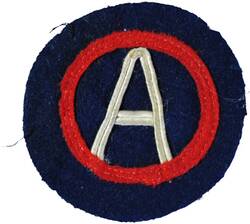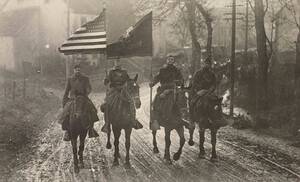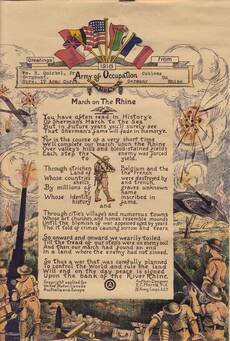Third U.S. Army – Army of Occupation
The American Zone of Occupation covered an area from Luxembourg to the Westerwald, along the Moselle and the western bank of the Rhine River, between Trier and Koblenz. To the north lay the British Zone and to the south, the French.
After the war, the American soldiers were keen to return home as quickly as possible and no one foresaw a four year occupation period. Major General Joseph T. Dickman (1857–1927) was placed in command of the Third U.S. Army, later known as the Army of Occupation; which began moving towards Koblenz on November 17, 1918. The Third Army was composed of 250,000 men, including many elements; engineer units, the Quartermaster, medical units, Signal Corps, Transportation Corps and even elements of the Army Air Corps.

- The letter “A” in a circle became the unofficial symbol of the Third United States Army after its establishment in the fall of 1918. Replacing the Third Army in July 1919, the newly created American Forces in Germany took over this badge officially. The white “A” encircled by a red “O” stood for “Army of Occupation” (Courtesy of Alexander Barnes, Colonial Heights, VA).
The movement of such a large army was a logistical nightmare, with the first soldiers not arriving in Germany itself until December 1, 1918. The main body arrived two days later, and the entire zone was occupied by the 17th. The local Germans were quickly persuaded that their previous opinion of Americans had been wrong. The Doughboys often demonstrated themselves as well disciplined, the result of endless training and leadership, especially that of General Pershing. Only occasionally did predictable, isolated conflicts arise between individual soldiers. The headquarters were established in Koblenz and soon the American flag was waving over the Ehrenbreitstein Fortress as a symbol of the Watch on the Rhine.



